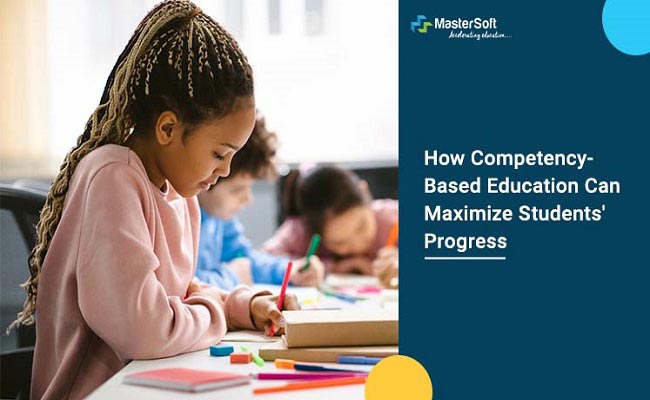How Competency-Based Education Can Maximize Students’ Progress 2023. Owing to the growing demands for a new and improved educational system the schools and higher educational institutes made necessary changes and revitalized their organizational structure. New and unique methodologies and strategies were applied in teaching as well as in the administrative attributes to ensure seamless functioning.
In the context of the learning process, plain blackboard teaching enforces monotonous rote memorization which stunts the student’s creative thinking ability. A system that is focused on compelling students for studying only to score high marks leads to inadequate learning and short-term memory.
Addressing these crucial issues was important followed by implementing remedies to solve them, as a part of their comprehensive restructuring many strategies were introduced. The one that stood out amongst them is Competency-Based Education which is a framework that has become quite popular among many colleges and universities.
How Competency-Based Education Can Maximize Students’ Progress
What is Competency-Based Education?
It is a framework for both teaching and learning which encourages the students to learn a skill or a subject at their own pace without having to worry about catching up with the rest of the class. The teachers develop personalized lessons aligned with the curriculum so that the students can enjoy learning and get a deeper understanding of the subjects.
Let Us Take A Look At How CBE Serves To Maximize Student Progress: Learning Management Systems
1: Promotes Skill-building In Students
Imagine a teacher teaching algebra to students while explaining the sums and formulas; he just proceeds to do so by demonstrating everything at such a pace that some of the students could not understand anything. Moreover, they are not confident enough to express their doubts and ask the teacher to clarify them.
In CBE, the emphasis is given more on the practical application of a particular domain, say for example where can mathematics be applied in our daily lives or how is it going to be used in the career ahead. Each subject is taught by keeping in mind the real-life relevance to it and by doing so the students get to figure out :
- How to apply knowledge in any given situation
- Understanding of basic and key concepts
- Utilizing their skills in any workspace
The crippling fear and anxiety that usually grips a new graduate or job aspirant can be effectively curtailed with the help of the skill-building attribute.
2: Making Learning More Student-centric
What Does Student-centric Learning Mean?
When we develop the curriculum and study modules from the student’s perspective rather than from a teacher’s point of view it is called student-centric learning. The teachers ensure that the learning objectives are declared in advance so that the students are aware of what they would be learning.
While giving assignments and group projects the students are given the liberty to choose their topics and collaborate equally with other classmates. With minimal interference, the teachers make sure that the process is conducive to high-quality learning simultaneously giving complete ownership of the project.
This helps to develop leadership skills, and social skills, and also significantly contributes to forming independent thinking and not being influenced by others.
3: Emphasis On Expertise
The goal of competency-based education is to look beyond the grades and scores and focus more on empowering the students by polishing their skills. Each subject is taught in such a way that they get an understanding of the core concepts.
The students get a clear picture of where the subjects can be applied and what is their intrinsic value; hence by the time they graduate, they would be experts in their respective domains hence getting employment opportunities will longer be difficult.
4: Pedagogical Approaches Directed Toward Students
The traditional educational system centered around a rigid structure that focused more on making students comply with their principles. CBE on the other hand implements those pedagogical strategies which are instrumental in meeting the learning needs and goals of the students.
Hence the learning outcomes which are specified are aligned with developing the academic foundations and fostering emotional and social skills.
5: Assessments That Provide Helpful Insights
Formative assessments which are included within the framework of the system are designed to provide a sense of transparency when it comes to tracking student learning progress. Through a feedback system, the students would be able to understand the areas they are faltering and at the same time, they would be able to attain the learning objectives.
The teachers, on the other hand, would be able to see and measure the level of proficiency the students have attained so far.
In conclusion
Competency-Based Education is distinguished by the fact that it is directed towards empowering student learning by fostering the skills. The educational methodologies which are employed are targeted toward improving their understanding of core concepts. Most institutes nowadays have started to integrate Learning Management Systems to make personalized learning modules easier. Hope you enjoy reading our article How Competency-Based Education Can Maximize Students’ Progress.
